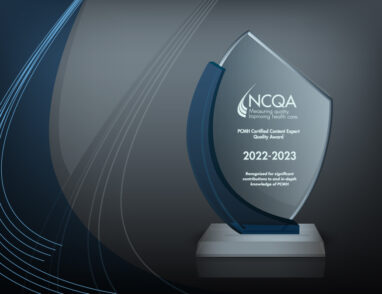The Growing Support for PCMH
December 4, 2015 · NCQA
Support for patient-centered medical homes is growing—and quickly.
One study found that as of 2009, just 26 insurer programs were providing payments to support PCMH initiatives across the country. NCQA’s recent analysis found that number has grown six-fold: today, there are more than 160 PCMH initiatives in 48 states, Puerto Rico and the District of Columbia. The landscape of PCMH is rapidly evolving and our assessment reflects a “point in time.”
Why is the PCMH model so popular? The answer is simple. More studies show that the model improves the delivery and experience of care for providers and patients alike. The evidence of PCMH success is growing as fast as the model itself.
That’s great news, but many initiatives may not be paying enough to help PCMH practices sustain the powerful model for improving the cost, quality and experience of care.
Improvement requires investment. If traditional models of care have proved inadequate in the shift from “volume” to “value,” then the traditional models of payment are similarly insufficient. NCQA’s Public Policy department recently set out to understand the kind of payment reforms currently leveraged to drive PCMH transformation across the country. Aside from the substantial growth of the model nationwide, we found this:
- Per-member, per-month (PMPM) payments are the most common incentive. Payments often increase based on recognition levels to cover the cost of PCMH activities not traditionally reimbursed, such as care coordination or enhanced patient access.
- Only 1/3 of the initiatives we found provide adequate financial support. PCMH initiatives are offering a wide range of monthly incentive payments. However, the majority of incentives do not meet the $6-8 PMPM that research suggests is necessary to sustain transformation and reflect the true value and cost savings delivered by the model.
- The majority of incentives are tied to a national PCMH recognition program. Across both regional payers and larger national entities, PCMH recognition is recognized or required for participation in many initiatives. At least 24 initiatives explicitly require NCQA recognition; another 87 recognize NCQA recognition as meeting programmatic goals.
- Many PCMH initiatives use multiple incentive structures. To accommodate the diverse needs and readiness of practices to adopt PCMH, payers often use multiple incentive structures to drive transformation. These range from basic lump-sum transformation payments to more evolved shared savings. Very few have assumed two-sided risk or receive capitated payment.
- Payment reform is an integral component of successful PCMH implementation. Ongoing incentive payments are necessary to drive and sustain practice transformation. Incentives are critical for producing the demonstrated improvements in cost and quality that PCMH implementation can achieve.
Change in the rapidly evolving landscape of PCMH will only accelerate. As , and other public and private payers fulfill their commitments to PCMH, the information above will change.
One thing, however, is certain: the medical home will continue to transform the way we deliver and experience health care. Though some might question or belabor the cost of PCMH, the real cost lies in stagnant, volume-driven delivery systems. Value-based care is our future—and patient-centered medical homes can help us get there.
Please join NCQA on December 16 for a Google Hangout to discuss what to do about these important findings.








